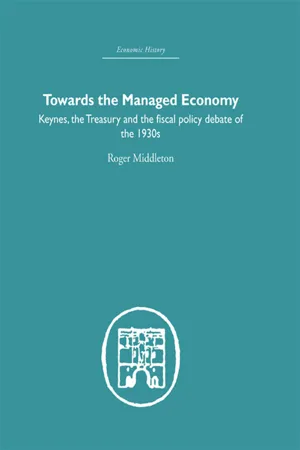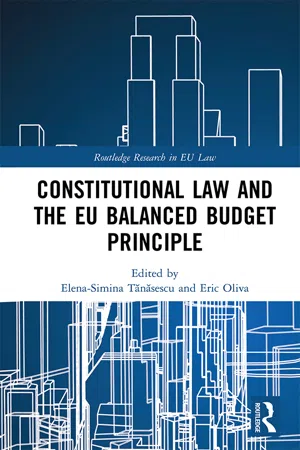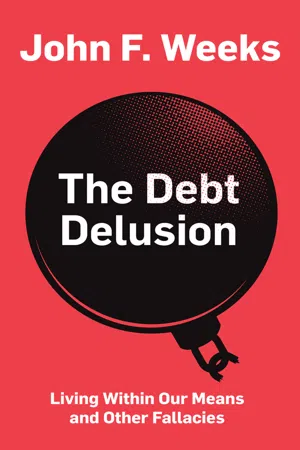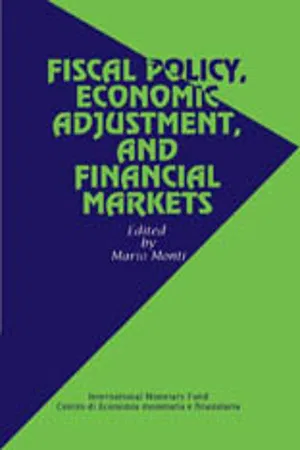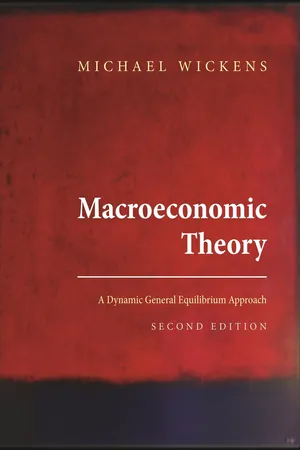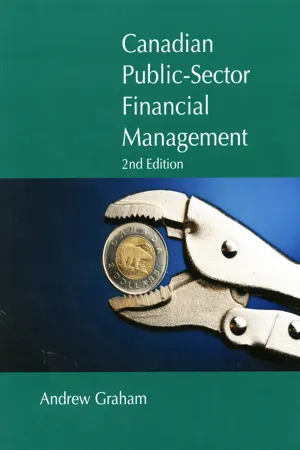Economics
Budget Balance
Budget balance refers to the difference between a government's total revenue and its total expenditure over a specific period, typically a fiscal year. A positive budget balance indicates a surplus, meaning that revenue exceeds expenditure, while a negative balance indicates a deficit. The budget balance is a key indicator of a government's fiscal health and its ability to meet financial obligations.
Written by Perlego with AI-assistance
Related key terms
7 Key excerpts on "Budget Balance"
- eBook - ePub
Towards the Managed Economy
Keynes, the Treasury and the fiscal policy debate of the 1930s
- Roger Middleton(Author)
- 2013(Publication Date)
- Routledge(Publisher)
To remedy this central defect, the concept of the full (or constant) employment Budget Balance was developed. 2 This is defined as the Budget Balance that would result (with the same nominal tax rates and public spending plans) if private sector demand was just sufficient continuously to maintain activity at a constant rate of unemployment. It is thus a measure of the Budget Balance which would have occurred had there been no deviation of economic activity from its trend path. Since such a measure will not be ‘affected by fluctuations in economic activity that shrink or swell the revenue base relative to that associated with the path of potential growth’, it consequently provides a means ‘to focus on the policy actions that determine expenditure programs and tax rates, and to separate them from a consideration of the autonomous strength of private demand and of the posture of monetary policy’ (Okun and Teeters 1970, 78). While this is the most appropriate measure for our purposes, before proceeding further with our analysis we ought to briefly consider alternative measures (see Lotz 1971; Chand 1977 and Shaw 1979 for a fuller discussion). The selection of any summary measure of fiscal influence requires that abstractions be made concerning the structure of the economy and the channels through which the budget interacts with the economy - Simina T?n?sescu, Eric Oliva(Authors)
- 2021(Publication Date)
- Routledge(Publisher)
Handbuch Rechtsphilosophie (J.B. Metzler 2017).6 Thomas Stauffer, Instrumente des Haushaltsausgleichs, Ökonomische Analyse und Rechtliche Umsetzung (Helbing & Lichtenhahn 2001) 6ff.7 John Maynard Keynes, General Theory of Employment, Interest, and Money (Macmillan and Co 1936) 383.8 Lorenzo Bini Smaghi, Member of the Executive Board of the ECB, in a speech at the Master Programme in International Business and Economics, Università di Pavia, 24 February 2010, www.ecb.europa.eu/press/key/date/2010/html/sp100224.en.html , accessed 10 December 2020Budget Balances in accounting and statistics
In the end, all Budget Balances are based on what has been accounted for in books and ledgers. The way this is done is therefore of crucial importance for the understanding of the concept of Budget Balance, both in a normative and positive perspective. In this chapter we thus present a short outline of public sector accounting, its systems and standards, as well as government finance statistics with a view to the concept of Budget Balance.Public sector accounting
Public sector accounting may be defined as the recording, classifying and aggregating of financial and economic data in such a way as to provide information about the government and other public entities controlled by it for accountability and decision-making purposes. This is a tentative, primarily descriptive definition, because unlike private sector accounting the theoretical basis of public sector accounting is still underdeveloped.9- eBook - ePub
The Debt Delusion
Living Within Our Means and Other Fallacies
- John F. Weeks(Author)
- 2020(Publication Date)
- Polity(Publisher)
The “balance the books” cliché subsumes several issues about budgets rarely made explicit. To take two obvious ones: what should be balanced, and over what time period? Conventional answers to these questions are that total revenue should equal total spending and that balancing should be an annual goal. Both answers are arbitrary, with little or no analytical or practical justification. The next section pursues the question of what should be balanced. With regard to time span, most national governments have procedures organized around annual budgets, with these procedures set by long practice with no obvious technical basis.The characteristics of spending and tax categories do not lend themselves to matching over a specific time period such as twelve months. While this does not in itself negate the putative imperative to balance the budget, it should leave one skeptical about assigning great importance to annual outcomes. Discussions of budget balancing (total revenue = total expenditure) over any time period typically treat expenditure and tax as undifferentiated amounts rather than as a combination of elements with various characteristics and different functions. To make further progress, we take apart (“disaggregate”) both taxing and spending.Budget Uncertainty
Concern about whether governments should balance their books too often proceeds as if both tax and spending were totals that governments can accurately plan and achieve. The presumption that governments control spending and tax outcomes leads to the expectation that the balance between the two, the surplus or deficit, is also well within the power of governments to control. With this presumption of predictability and control, the media frequently take politicians to task for “not meeting their targets,” especially targets for deficit reduction.In practice, total spending, total tax revenue and the balance between them are uncertain outcomes over which the taxing and spending government has less than full control. The root cause of the lack of control is the interactive nature of what the government does and the response of the economy, and vice versa. As developed in greater detail below, government tax and spending policies affect the ebb and flow of private economic activity; and the ebb and flow of private economic activity feed back on public spending and tax revenue. - Available until 20 Jul |Learn more
Contemporary Economics
An Applications Approach
- Robert Carbaugh(Author)
- 2016(Publication Date)
- Routledge(Publisher)
However, critics of this rule argue that it could make recessions more frequent and severe. A balanced-budget requirement would make recessions longer and more painful, first by eliminating the automatic stabilizers that protect people during downturns, and, second, by instead requiring measures to cut spending or increase taxes during slowdowns when the economy is already suffering from a lack of demand. Critics of the balanced-budget amendment also maintain that even if it were enacted Congress would figure out ways to escape its restrictive provisions. For example, Congress might use mechanisms such as “off-budget” expenditures and unrealistic budget projections to avoid the amendment’s discipline.Cyclically Balanced Budget
Some analysts maintain that balancing the budget annually is too extreme. Instead, they propose that the government should balance its budget over the course of the business cycle. Since the 1950s, the average business cycle for the United States has lasted about five to six years.What is the rationale of maintaining a cyclically balanced budget? During the recession (depression) stage of the business cycle, government should reduce taxes and increase expenditures, thus incurring a deficit. This will result in an increase in aggregate demand that will help stimulate the economy. Conversely, during an inflationary upswing, the government should increase taxes and decrease expenditures, thus incurring a surplus. The resulting decrease in aggregate demand would dampen the rate of inflation. Moreover, fiscal integrity would be maintained in that the budget would remain in balance over a complete business cycle—that is, cyclical deficits would be offset by prosperity surpluses. Therefore, over a complete business cycle, there would be no net increase in the national debt.However, a cyclically balanced budget is not without challenges. One problem is that the expansions and contractions of the business cycle may not be of equal magnitude and duration. For example, a long and severe recession followed by a modest and short expansion would likely result in a large deficit during the recession, but little or no surplus during the expansion. Therefore, the budget would incur a deficit over the complete business cycle. Another problem is getting politicians not to spend revenue increases that occur during expansions.Functional Finance
Other analysts argue that the function of government finance should not simply be to balance the budget on a yearly basis or over the course of the business cycle. Instead, government should try to balance the economy at full employment without inflation. - INTERNATIONAL MONETARY FUND(Author)
- 1989(Publication Date)
- INTERNATIONAL MONETARY FUND(Publisher)
Figure 1 ). Much of the disagreement has been about whether a causal relationship exists between the twin deficits and, in particular, whether a sharp reduction in the U. S. budget deficit is a necessary condition for a reduction in its trade deficit.Figure 1 . Overall U.S. Deficit and Foreign Investment, 1979–87(In billions of U.S. dollars, from first quarter to first quarter)Source : U.S. Department of Commerce , Survey of Current Business, various issues .This paper will explore the connection between fiscal policy and measures of external balance. Fiscal policy will be largely construed to mean budget policy, but some discussion of tax policy will be included, since it is relevant to the U. S. experience during the 1980s. The phrase “measures of external balance” is used on occasion in the text in place of the “balance of payments” used in the paper’s title, because the balance of payments in a formal sense always balances, and it is necessary to specify whether one wishes to examine the much touted and maligned merchandise trade balance or alternatives, such as the current account balance or its mirror image, net capital inflows.It is also important to specify whether one is operating under a regime of freely flexible, partly flexible, or fixed exchange rates. The transition from flexible to partly flexible exchange rates, particularly since the February 1987 Louvre Accord, is important to recognize, since it affects the observed adjustment mechanism that operates in response to a fiscal disturbance like a larger budget deficit.I shall begin with a general discussion of fiscal policy and the balance of payments and then examine some familiar ground within the context of a simple full-employment model for a small country. Next, the discussion is modified to more readily accommodate the case of the United States in the 1980s. Assumptions of a small country and full employment are relaxed. These discussions are next employed in conjunction with the behavior of other Group of Seven countries to focus explicitly on the recent U.S. experience with fiscal policy and external imbalances. Where appropriate, the role of attendant monetary policies is discussed in conjunction with fiscal policy.- eBook - ePub
Macroeconomic Theory
A Dynamic General Equilibrium Approach - Second Edition
- Michael Wickens(Author)
- 2012(Publication Date)
- Princeton University Press(Publisher)
figure 5.1 , which plots government expenditures as a proportion of GDP for the United States and for the United Kingdom since 1901. Real government expenditures on goods and services and real social security benefits as a proportion of GDP have increased considerably over the last century. In 1901 they were only 2.3% of GDP for the United States and 13.5% for the United Kingdom. In most Western countries they increased from around 10–20% of GDP prior to World War I to around 40–50% after World War II. The wars themselves were the times of the greatest expansion in government expenditures. Since World War II, the shares of government expenditures in GDP have risen steadily and, apart from unemployment benefits, which vary countercyclically over the business cycle, they are not much affected by the business cycle. On average, the expenditures on goods and services and on transfers are roughly equal in size. Total government expenditures also include interest payments on government debt.Government revenues are primarily tax revenues: direct taxes on incomes and expenditure, social security taxes, and corporate taxes. The balance varies somewhat between countries, but for most developed countries direct taxes and social security taxes—which are in effect taxes on incomes—are about 60% of total tax revenue, consumption taxes are about 25%, and corporate taxes are about 10%. The average tax rate on incomes (including social security) is around 42%. Tax revenues tend to be more affected by the business cycle than expenditures. This is the main reason why government deficits tend to increase during a recession.As previously noted, governments can raise additional revenues through borrowing from the public or borrowing from the central bank, i.e., by printing money. The government simply extends its overdraft on its account with the central bank, which cashes checks issued to the public by the government.It is common in macroeconomics without microfoundations, such as Keynesian macroeconomics, to treat government expenditures as having no welfare benefits. They are included simply to allow fiscal policy to be included in the analysis and to allow the size of the fiscal multiplier to be calculated. In the standard Keynesian model this is the effect on GDP of a discretionary change in government expenditures. As this is tantamount to buying goods and services and then throwing them away—or, as Keynes himself noted, burying them— this is not a satisfactory formulation of fiscal policy. In our analysis we start by including government expenditures in the household’s utility function. We then discuss the issue of the optimal level of government expenditures. This is followed by an analysis of public finances: how best to pay for government expenditures and satisfy the government budget constraint. We also examine optimal tax policy, optimal debt, and the sustainability of fiscal deficits (the fiscal stance) in the longer term. At the end of the chapter we summarize our findings on the best way to manage fiscal policy. - eBook - ePub
Canadian Public-Sector Financial Management
Second Edition
- Andrew Graham(Author)
- 2014(Publication Date)
- McGill-Queen's University Press(Publisher)
In general, government expenditures are not as closely connected with revenues because revenues of government are usually put into a consolidated revenue fund and those funds distributed among the departments or units. The consolidated revenue fund is a centrally managed revenue account common to Canadian federal and provincial governments, and one which describes the principal operating fund of the government. In principle, all revenues from all government activities are to be placed in this fund. Exceptions abound, but governments generally want to draw as much of their revenue into one central source as possible to ensure that the expenditures it approves are fundable and under a central control.Knowing the overall revenue situation is vital for governments to make good on their policy and program goals. Their entire expenditure plan is built on a set of revenue assumptions. The revenue budget serves a number of purposes for the whole of government:•to assure an accurate match of revenues to expenditures plans, •to adjust basic taxes both for revenue purposes and for the expenditure budget, •to interpret and project current economic behaviour and patterns as a whole to provide an estimate of revenue expectation, •to adjust other taxes in order to implement policy changes where tax expenditures are used as instruments of such policy (e.g., child tax credits in the federal government), •to make changes in fiscal policies (e.g., borrowing levels), and •to determine if alternate revenue sources – borrowing, reserves – are needed for current operations or capital investments.Governments continue to improve how they relate revenue to expenditure. Ontario’s introduction of quarterly financial reports offers an example of this match, but, as we will see, at the whole-of-government level. Figure 5.2 shows the third quarter revenue of expenditure projections for the 2012–13 fiscal year.For smaller public-sector organizations, the relationship between revenue and expenditure is clearer and more direct. For small voluntary agencies, the level of expenditure is dictated by funds raised (revenue). It is highly unlikely that this type of organization would have a separate revenue budget, let alone see it prepared and managed separately from the expenditure side by a distant central office. Rather, there would be a single budget, subject to short-term revenue variations unless the organization secured, on the basis of its overall expectations for the period, some form of interim funding, such as a line of credit.
Learn about this page
Index pages curate the most relevant extracts from our library of academic textbooks. They’ve been created using an in-house natural language model (NLM), each adding context and meaning to key research topics.
